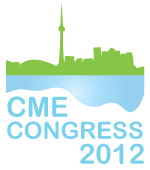Virginia Reed (Dartmouth Medical School); Mary Turco (Dartmouth-Hitchcock Medical Center); Karen Schifferdecker (Dartmouth Medical School)
Summary
We developed and tested a Personal Learning Plan© (PLP) designed to promote and assess continuing medical education (CME) learning outcomes. Results showed that participants who wrote SMARTer (specific, measurable, attainable, realistic, and timely) goals1 were more likely to report completing their goals than participants whose goals were less SMART. Given findings that “use of specific strategies to implement research-based recommendations seems to be necessary to ensure that practices change,”2 we believe use of a PLP constitutes a best practice in CME.
Purpose
The Personal Learning Plan© (PLP), designed to promote and assess continuing medical education (CME) learning, was partly derived from SMART goals (specific, measurable, attainable, realistic, and timely)1, a concept well-supported as a strategy to promote behavior change3-5. The goal of this study was to explore the relationship between SMART goals and provider behavior change, using the PLP as a tool.
Methods
347 of 841 participants attending Dartmouth-Hitchcock CME conferences completed a PLP. Participants’ goals were analyzed according to SMART criteria. Three months later, participants were asked how close they were to completing their goals.
Results
The 125 participants who provided follow-up information wrote SMARTer goals than those who did not follow up (p = .026).Those who indicated that they had completed their goal or were ‘very close’ or ‘extremely close’ to completing their goal wrote SMARTer goals than those who reported being ‘not at all close’ to ‘moderately close’ to completing their goal (p = .001).
Applications & Future Directions
Our results corroborate previous research that has found “use of specific strategies to implement research-based recommendations seems to be necessary to ensure that practices change.”2 On this basis, we believe use of a PLP constitutes a best practice in CME. Future directions include both a study of use of a PLP compared to a simple intent to change and work on helping participants to write SMARTer goals. Additional work will focus on finding a more objective measure of goal progress to overcome the limitations of self-report.
References
- Doran GT. There’s a S.M.A.R.T. way to write management’s goals and objectives. 1981.
- Bero LA, Grilli R, Grimshaw JM, Harvey E, Oxman AD, Thomson MA. Closing the gap between research and practice: an overview of systematic reviews of interventions to promote the implementation of research findings. The Cochrane Effective Practice and Organization of Care Review Group. BMJ 1998; 317: 465-8.
- Locke EA, Latham GP, Erez M. The Determinants of Goal Commitment. Acad Manage Rev 1988; 13: 23-39.
- Locke EA, Latham GP. A Theory of Goal Setting and Task Performance. Englewood Cliffs, NJ: Prentice-Hall Inc.; 1990.
- Locke EA, Latham GP. Building a practically useful theory of goal setting and task motivation. A 35-year odyssey. The American psychologist 2002; 57: 705-17.





